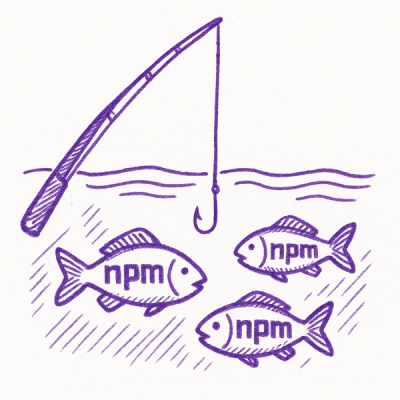
Security News
Bun 1.2.19 Adds Isolated Installs for Better Monorepo Support
Bun 1.2.19 introduces isolated installs for smoother monorepo workflows, along with performance boosts, new tooling, and key compatibility fixes.
@spectrum-web-components/slider
Advanced tools
`<sp-slider>` allows users to quickly select a value within a range. They should be used when the upper and lower bounds of the range are invariable.
<sp-slider> allows users to quickly select a value within a range. They should be used when the upper and lower bounds of the range are invariable.
yarn add @spectrum-web-components/slider
Import the side effectful registration of <sp-slider> via:
import '@spectrum-web-components/slider/sp-slider.js';
When leveraging the editable attribute, the @spectrum-web-components/number-field/sp-number-field.js dependency will be asynchronously loaded via a dynamic import to reduce JS payload for applications not leveraging this feature. In the case that you would like to import those transverse dependencies statically, import the side effectful registration of <sp-slider> as follows:
import '@spectrum-web-components/slider/sync/sp-slider.js';
When looking to leverage the Slider base class as a type and/or for extension purposes, do so via:
import { Slider } from '@spectrum-web-components/slider';
<sp-slider label="Slider Label"></sp-slider>
<sp-slider label="Slider Label - Disabled" disabled></sp-slider>
By default, an <sp-slider> element has both a "text" label and a "value" label. The "value" label is output by the element itself based on its state, but the "text" label must be supplied by the consuming developer in order for the <sp-slider> to be delivered in an accessible manner.
Either or both of these can be suppressed visually as needed by your application UI, while still fulfilling their role in delivering a quality accessibility tree to the browser. This delivery is controlled by the label-visibility attribute (or labelVisibility property) which accepts text, value, or none as values.
Use label-visibility="text" to suppress the "value" label, use label-visibility="value" to suppress the "text" label, or use label-visibility="none" to suppress the "text" label. In each case outlined above the content for both labels will be made available to screen readers, so be sure to manage the content delivered to visitors in that context.
<sp-slider
label="No visible value label"
label-visibility="text"
value="50"
></sp-slider>
<sp-slider label="No visible text label" label-visibility="value"></sp-slider>
<sp-slider label="No visible labels" label-visibility="none"></sp-slider>
The slider also optionally accepts two or more <sp-slider-handle> elements with slot="handle":
<sp-slider step="1" min="0" max="255">
Output Levels
<sp-slider-handle
slot="handle"
name="low"
label="Low"
value="5"
max="next"
></sp-slider-handle>
<sp-slider-handle
slot="handle"
name="mid"
label="Mid"
value="100"
min="previous"
max="next"
></sp-slider-handle>
<sp-slider-handle
slot="handle"
name="high"
label="High"
value="250"
min="previous"
></sp-slider-handle>
</sp-slider>
<sp-slider label="Slider Label" size="s"></sp-slider>
<sp-slider label="Slider Label - Editable" editable size="s"></sp-slider>
<sp-slider label="Slider Label"></sp-slider>
<sp-slider label="Slider Label - Editable" editable></sp-slider>
<sp-slider label="Slider Label" size="l"></sp-slider>
<sp-slider label="Slider Label - Editable" editable size="l"></sp-slider>
<sp-slider label="Slider Label" size="xl"></sp-slider>
<sp-slider label="Slider Label - Editable" editable size="xl"></sp-slider>
An <sp-slider> element can be paired with an <sp-number-field> element via the editable attribute. The <sp-number-field> will be passed all of the standard options from the <sp-slider> element (e.g. min, max, formatOptions, etc.) and will also accept the hide-stepper attribute in order to prevent the display of its stepper UI.
The quiet attribute applies Quiet styling to the number field when a slider is editable.
<sp-slider
label="Hours of the day (editable)"
editable
max="24"
min="0"
value="7.25"
step="0.25"
style="--spectrum-slider-editable-number-field-width: 100px;"
format-options='{
"style": "unit",
"unit": "hour"
}'
></sp-slider>
<sp-slider
label="Angle (editable)"
editable
hide-stepper
min="0"
max="360"
format-options='{
"style": "unit",
"unit": "degree",
"unitDisplay": "narrow"
}'
></sp-slider>
<sp-slider quiet editable value="50"></sp-slider>
<sp-slider quiet editable hide-stepper value="50"></sp-slider>
Use variant="filled" to add a filled style to the slider from a starting point to the current value. By default the starting point is the min value.
<sp-slider
label="Slider Label"
max="1"
variant="filled"
min="0"
value=".5"
step="0.01"
></sp-slider>
<sp-slider
label="Slider Label - Disabled"
max="1"
variant="filled"
min="0"
value=".5"
step="0.01"
disabled
></sp-slider>
When both fill-start and variant="filled" are used in <sp-slider>, the fill-start property defines the starting point. If fill start does not have a number associated with it, the starting point will be the value.
Any number (including 0) can be used as a fill-start value. If a custom normalization function is provided, it will also normalize all fill-related params.
<sp-slider
label="Slider Label"
max="1"
fill-start
variant="filled"
min="0"
value=".5"
step="0.01"
></sp-slider>
<sp-slider
label="Slider Label"
max="1"
fill-start
variant="filled"
min="0"
value=".8"
step="0.01"
disabled
></sp-slider>
<sp-slider
id="fill-start-slider"
label="fill-start greater than value"
max="1"
min="0"
value=".3"
step="0.1"
fill-start="0.7"
variant="filled"
></sp-slider>
<sp-slider
id="fill-start-slider"
label="Fill Start less than Value"
max="1"
min="0"
value=".7"
step="0.1"
fill-start="0.25"
variant="filled"
></sp-slider>
<sp-slider
label="fill-start set to 0"
max="1"
min="-1"
value=".7"
step="0.1"
fill-start="0"
variant="filled"
></sp-slider>
With variant="tick", ticks are applied at intervals defined with the tick-step attribute. The tick-labels attribute will apply labels to the ticks.
<sp-slider label="Slider Label" variant="tick" tick-step="5"></sp-slider>
<sp-slider
label="Slider Label - Disabled"
variant="tick"
tick-step="5"
disabled
></sp-slider>
<sp-slider
label="Slider Label"
variant="tick"
tick-step="5"
tick-labels
></sp-slider>
<sp-slider
label="Slider Label - Disabled"
variant="tick"
tick-step="5"
tick-labels
disabled
></sp-slider>
With variant="ramp", the slider with increases as it approaches the max position.
<sp-slider label="Slider Label" variant="ramp"></sp-slider>
<sp-slider label="Slider Label - Disabled" variant="ramp" disabled></sp-slider>
The "range" variant along with two handles to create a range slider. (See slider handle.)
<sp-slider variant="range" step="1" min="0" max="255">
Output Levels
<sp-slider-handle
slot="handle"
name="min"
label="Minimum"
value="5"
></sp-slider-handle>
<sp-slider-handle
slot="handle"
name="max"
label="Maximum"
value="250"
></sp-slider-handle>
</sp-slider>
An <sp-slider> or <sp-slider-handle> element will process its numeric value with new Intl.NumberFormat(this.resolvedLanguage, this.formatOptions).format(this.value) in order to prepare it for visual delivery in the input. In order to customize this processing supply your own Intl.NumberFormatOptions via the formatOptions property, or format-options attribute as seen below.
this.resolvedLanguage represents the language in which the <sp-slider> or <sp-slider-handle> element is currently being delivered. By default, this value will represent the language established by the lang attribute on the root <html> element while falling back to navigator.language when that is not present. This value can be customized via a language context provided by a parent element that listens for the sp-language-context event and supplies updated language settings to the callback function contained therein. Applications leveraging the <sp-theme> element to manage the visual delivery or text direction of their content will also be provided a reactive context for supplying language information to its descendants.
<sp-slider
min="0"
max="1"
step="0.01"
value="0.5"
label="Slider Label"
format-options='{
"style": "percent"
}'
></sp-slider>
More advanced formatting is available by specifying a formatting function to
the getAriaHandleText property on an sp-slider or sp-slider-handle. Or,
for a multi-handle slider, you can format the combined value label for all
handles by passing a formatting function to the getAriaValueText property
on the parent sp-slider.
Intl.NumberFormatOptionsWhile Intl.NumberFormatOptions does support a wide range of units, it is possible to encounter units (e.g. the graphics units of pixel, pixels, points, etc.) that are not supported therein. When this occurs, an <sp-slider> element will attempt to polyfill support for this unit. See the following example delivering { style: "unit", unit: "px" } below:
<sp-slider
style="width: 200px"
value="500"
format-options='{
"style": "unit",
"unit": "px"
}'
>
Document width in pixels
</sp-slider>
Note: the polyfilling done here is very simplistic and is triggered by supplying options that would otherwise cause the Intl.NumberFormat() call to throw an error. Once the unsupporting unit of px causes the construction of the object to throw, a backup formatter/parser pair will be created without the supplied unit data. When the style is set to unit, the unit value will be adopted as the static unit display. This means that neither pluralization nor translation will be handled within the <sp-number-field> element itself. If pluralization or translation is important to the delivered interface, please be sure to handle passing those strings into to element via the formatOptions property reactively to the value of the element or locale of that page in question.
Slider will reset to its default-value when the user double clicks on the slider handle or if the user presses the escape key when the slider handle is focused.
<sp-slider value="50" default-value="20"></sp-slider>
Note: If a slider with default-value attribute is contained in a modal and the slider handle is focused then the following interaction will occur on pressing the escape key:
By default, sp-slider assumes a linear scale between the min and max values.
For advanced applications, it is sometimes necessary to specify a custom
"normalization."
Normalization is the process of converting a slider to a value between 0 and 1 where 0 represents the minimum and 1 represents the maximum. See the "Three Handles Complex" example in the playground.
<sp-slider disabled value="50"></sp-slider>
<sp-slider disabled quiet value="50"></sp-slider>
<sp-slider disabled editable value="50"></sp-slider>
<sp-slider disabled variant="filled" value="50"></sp-slider>
<sp-slider disabled variant="ticks" value="50"></sp-slider>
<sp-slider disabled variant="ramp" value="50"></sp-slider>
The indeterminate attribute will be passed to the internal <sp-number-field> element and alter its visual delivery until a change has been made to the <sp-slider> element at which point the change event that is dispatched can be understood as always removing the indeterminate attribute from the <sp-slider>.
<sp-slider indeterminate value="50"></sp-slider>
<sp-slider indeterminate quiet value="50"></sp-slider>
<sp-slider indeterminate editable value="50"></sp-slider>
<sp-slider indeterminate variant="filled" value="50"></sp-slider>
<sp-slider indeterminate variant="ticks" value="50"></sp-slider>
<sp-slider indeterminate variant="ramp" value="50"></sp-slider>
Like the <input type="range"> element after which the <sp-slider> is fashioned, it will dispatch input events in a stream culminating with a change event (representing the final commit of the value to the element) once the user has finished interacting with the element. Both other these events can access the value of their dispatching target via event.target.value. In this way, a steaming listener pattern similar to the following can prove useful:
const slider = document.querySelector('sp-slider');
const endListener = ({ target }) => {
target.addEventListener('input', startListener);
target.removeEventListener('input', streamListener);
target.removeEventListener('change', endListener);
console.log(target.value);
};
const streamListener = ({ target }) => {
console.log(target.value);
};
const startListener = ({ target }) => {
target.removeEventListener('input', startListener);
target.addEventListener('input', streamListener);
target.addEventListener('change', endListener);
console.log(target.value);
};
slider.addEventListener('input', startListener);
Every slider should have a label. A slider without a label is ambiguous and not accessible. Write the label in sentence case.
In rare cases where context is sufficient and a label doesn't require visibility, make sure to have the design reviewed and approved by an accessibility expert. Use label-visibility to set which labels should remain visible, and non-visible labels will still be read by assistive technology.
The Tab and Shift+Tab keys are used to navigate to and set focus on the slider control. The Arrow Up (↑) and Arrow Down (↓) keys are used to increment the slider value, respectively.
Because multiple sliders are often used on the same page, the number field in the editable slider is designed to not be keyboard focusable via Tab or Shift+Tab keys. (See WAI ARIA APG's Keyboard Navigation Inside Components.) Since the slider itself can already be incremented via the arrow keys, a roving tabindex controller cannot be used within the slider; therefore, the number field will not be keyboard navigable.
Review the accessibility guidelines for the slider handle.
1.7.0 (2025-06-11)
sp-overlay: Fixed : Overlays (like pickers and action menus) were incorrectly closing when scrolling occurred within components. The fix ensures the handleScroll method in OverlayStack only responds to document/body scrolling events and ignores component-level scrolling events, which was the original intention.
sp-card: Fixed: On mobile Chrome (both Android and iOS), scrolling on sp-card components would inadvertently trigger click events. This was caused by the timing-based click detection (200ms threshold) in the pointer event handling, which could misinterpret quick scrolls as clicks. This issue did not affect Safari on mobile devices.
sp-action-button: - Fixed : Action buttons with href attributes now properly detects modifier keys and skips the proxy click, allowing only native browser behavior to proceed.
sp-styles: Remove unnecessary system theme references to reduce complexity for components that don't need the additional mapping layer.
sp-card: - Fixed: sp-card component relies on sp-popover for certain toggle interactive behaviors, but this dependency was missing from its dependency tree.
sp-menu: Fixes: Icons in menu stories weren't properly responding to theme changes when used in functional story components. Switching to class-based LitElement components ensures proper component lifecycle hooks and shadow DOM context for icon initialization and theme integration.
sp-tabs: Added @spectrum-web-components/action-button as a dependency for Tabs as its used in the direction button.
sp-split-view: Added @spectrum-web-components/shared dependency in splitview since it uses ranDomId from the shared package
sp-textfield: Replace deprecated word-break: break-word with overflow-wrap: break-word to align with modern CSS standards and improve cross-browser compatibility. This property was deprecated in Chrome 44 (July 2015) in favor of the standardized overflow-wrap property.
FAQs
`<sp-slider>` allows users to quickly select a value within a range. They should be used when the upper and lower bounds of the range are invariable.
The npm package @spectrum-web-components/slider receives a total of 0 weekly downloads. As such, @spectrum-web-components/slider popularity was classified as not popular.
We found that @spectrum-web-components/slider demonstrated a healthy version release cadence and project activity because the last version was released less than a year ago. It has 7 open source maintainers collaborating on the project.
Did you know?

Socket for GitHub automatically highlights issues in each pull request and monitors the health of all your open source dependencies. Discover the contents of your packages and block harmful activity before you install or update your dependencies.

Security News
Bun 1.2.19 introduces isolated installs for smoother monorepo workflows, along with performance boosts, new tooling, and key compatibility fixes.

Security News
Popular npm packages like eslint-config-prettier were compromised after a phishing attack stole a maintainer’s token, spreading malicious updates.

Security News
/Research
A phishing attack targeted developers using a typosquatted npm domain (npnjs.com) to steal credentials via fake login pages - watch out for similar scams.